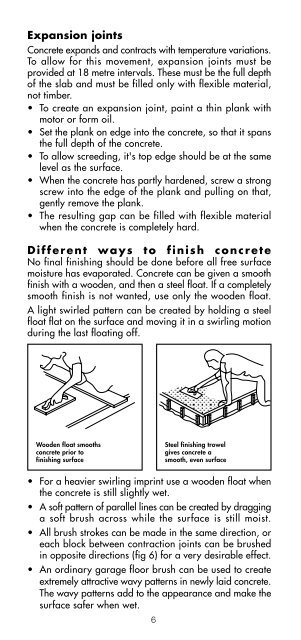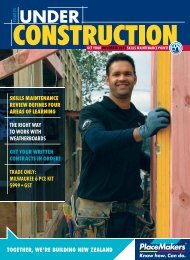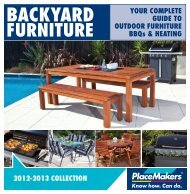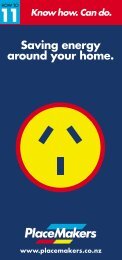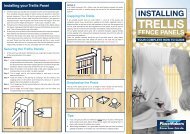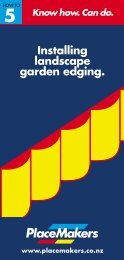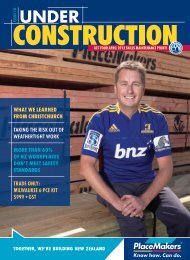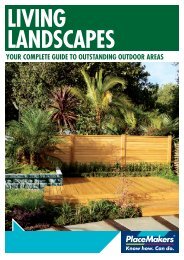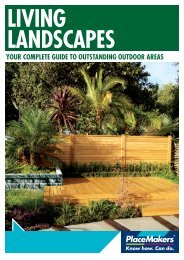Working with concrete. - PlaceMakers
Working with concrete. - PlaceMakers
Working with concrete. - PlaceMakers
You also want an ePaper? Increase the reach of your titles
YUMPU automatically turns print PDFs into web optimized ePapers that Google loves.
Expansion joints<br />
Concrete expands and contracts <strong>with</strong> temperature variations.<br />
To allow for this movement, expansion joints must be<br />
provided at 18 metre intervals. These must be the full depth<br />
of the slab and must be filled only <strong>with</strong> flexible material,<br />
not timber.<br />
• To create an expansion joint, paint a thin plank <strong>with</strong><br />
motor or form oil.<br />
• Set the plank on edge into the <strong>concrete</strong>, so that it spans<br />
the full depth of the <strong>concrete</strong>.<br />
• To allow screeding, it's top edge should be at the same<br />
level as the surface.<br />
• When the <strong>concrete</strong> has partly hardened, screw a strong<br />
screw into the edge of the plank and pulling on that,<br />
gently remove the plank.<br />
• The resulting gap can be filled <strong>with</strong> flexible material<br />
when the <strong>concrete</strong> is completely hard.<br />
Different ways to finish <strong>concrete</strong><br />
No final finishing should be done before all free surface<br />
moisture has evaporated. Concrete can be given a smooth<br />
finish <strong>with</strong> a wooden, and then a steel float. If a completely<br />
smooth finish is not wanted, use only the wooden float.<br />
A light swirled pattern can be created by holding a steel<br />
float flat on the surface and moving it in a swirling motion<br />
during the last floating off.<br />
Wooden float smooths<br />
<strong>concrete</strong> prior to<br />
finishing surface<br />
Steel finishing trowel<br />
gives <strong>concrete</strong> a<br />
smooth, even surface<br />
• For a heavier swirling imprint use a wooden float when<br />
the <strong>concrete</strong> is still slightly wet.<br />
• A soft pattern of parallel lines can be created by dragging<br />
a soft brush across while the surface is still moist.<br />
• All brush strokes can be made in the same direction, or<br />
each block between contraction joints can be brushed<br />
in opposite directions (fig 6) for a very desirable effect.<br />
• An ordinary garage floor brush can be used to create<br />
extremely attractive wavy patterns in newly laid <strong>concrete</strong>.<br />
The wavy patterns add to the appearance and make the<br />
surface safer when wet.<br />
6


